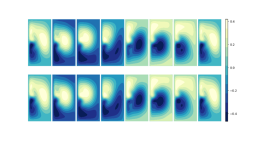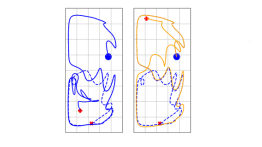Kevin Yao ME’18 ME’20 Presented Research at the 2020 ASP Division of Fluid Dynamics Conference
POSTED ON: December 21, 2020
Mechanical engineering graduate student, Kevin Yao ME’18 ME’20, presented his research at the American Physical Society's annual Division of Fluid Dynamics Conference, held on November 22-24 in Chicago (virtually). Kevin has also presented this research at the Society for Industrial and Applied Mathematics (SIAM) conference on Applications of Dynamical System in 2019, you can read more here.
With the help of Professor of Physics Philip Yecko and Professor of Applied Mathematics Eric Forgoston of Montclair State University, Kevin's thesis research is on the use of “Echo State Networks” a form of Machine Learning to predict the behavior of time-dependent dynamical systems which originate from a simplified model of ocean flow, known in geophysical fluid
dynamics as the quasi-geostrophic beta plane, or QG. QG models of oceans can be used to study trajectories of objects in the ocean and machine learning models may be very useful in predicting pollutant dispersal or in search and recovery.
More information about the conference can be found here.






